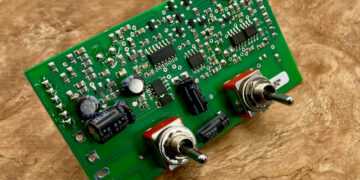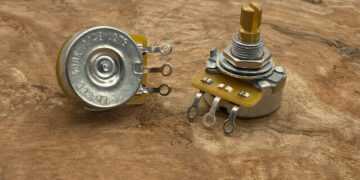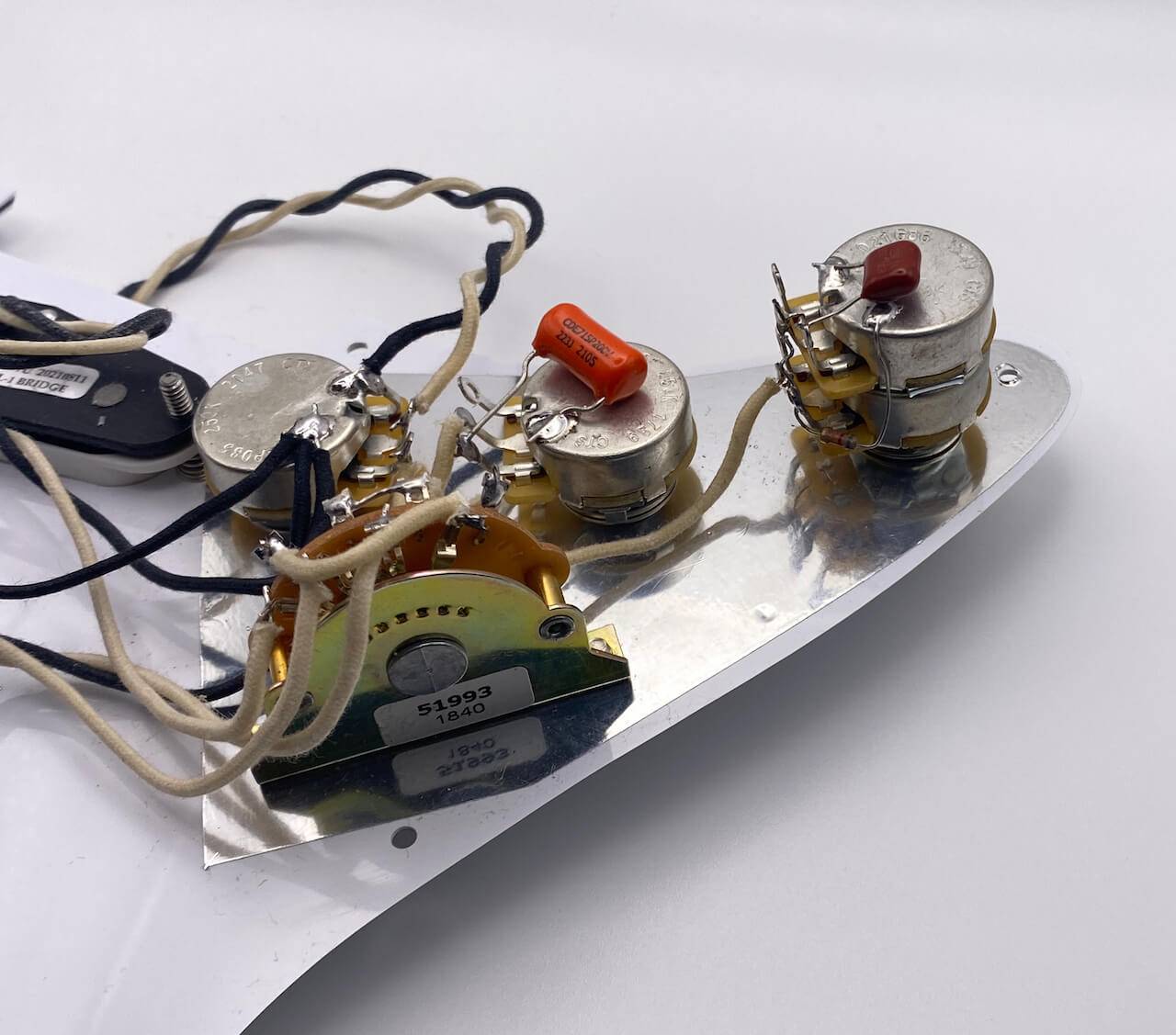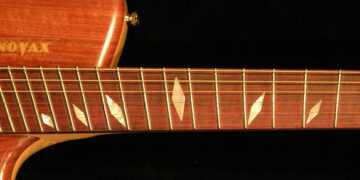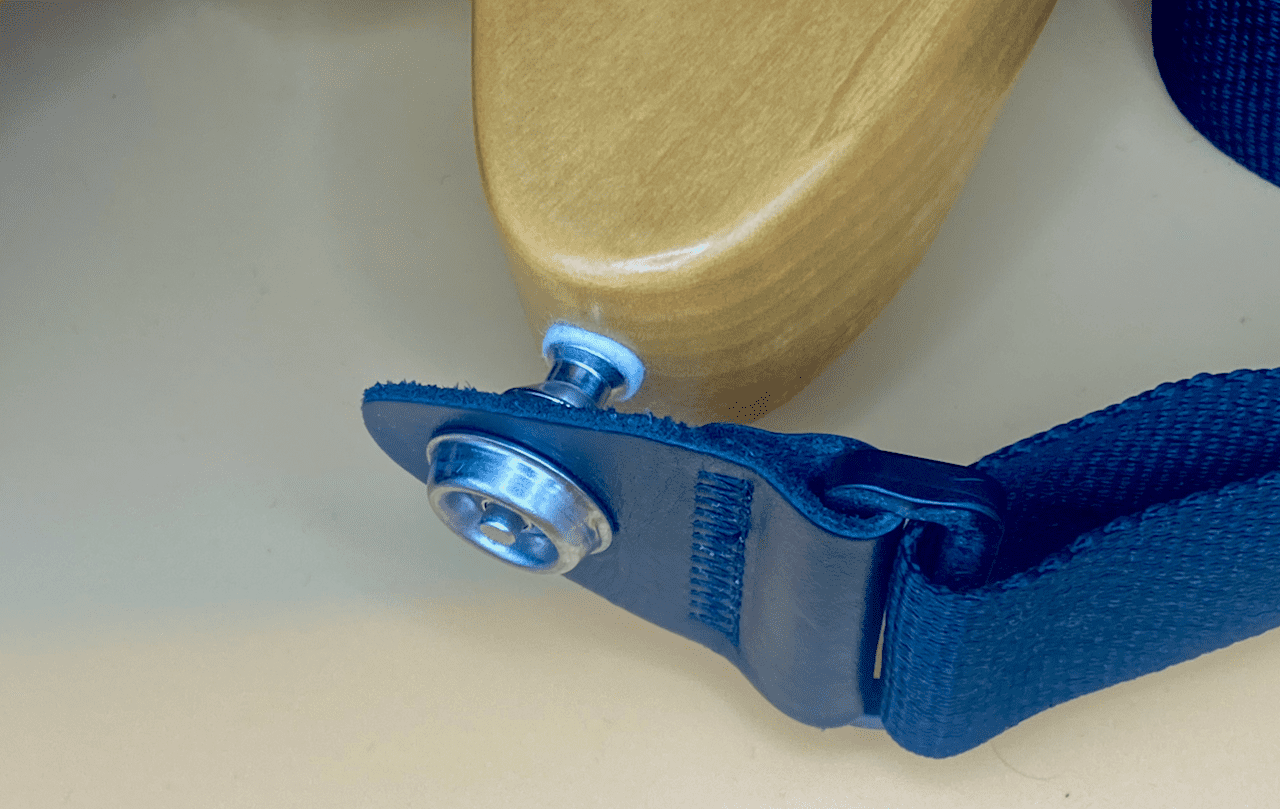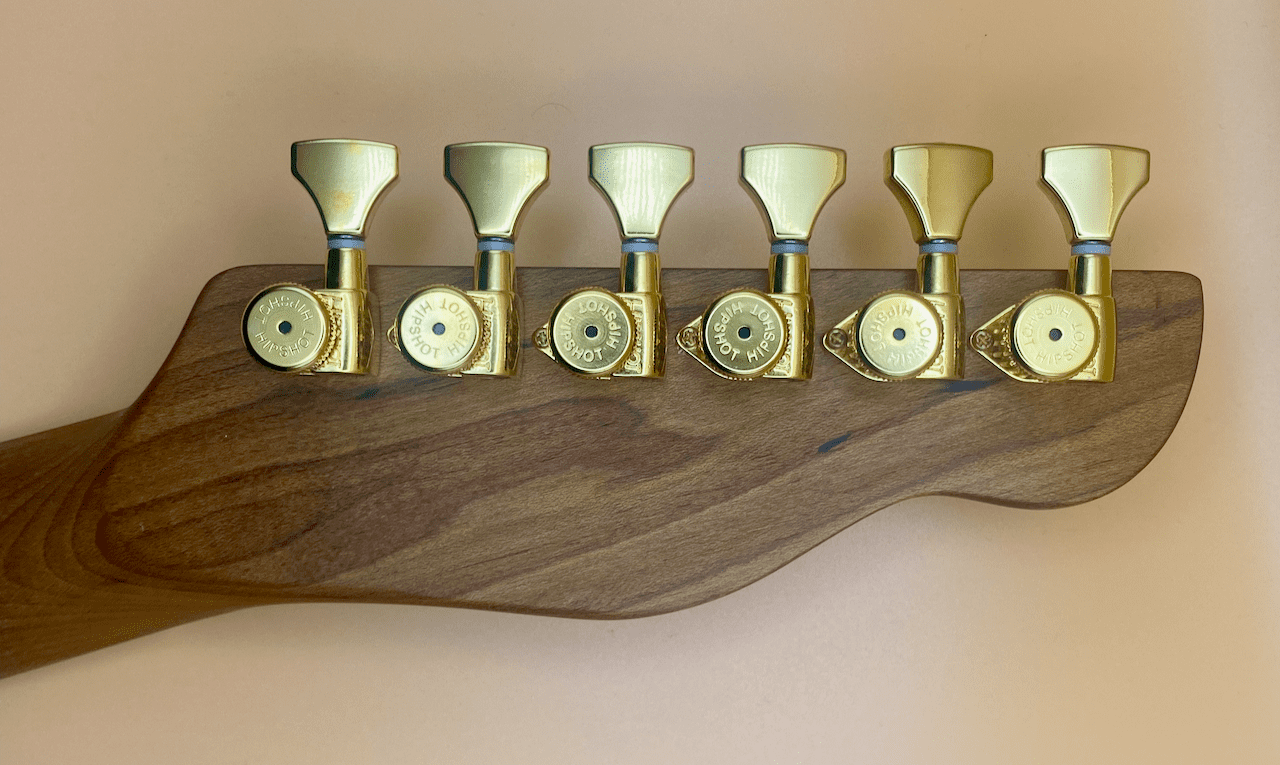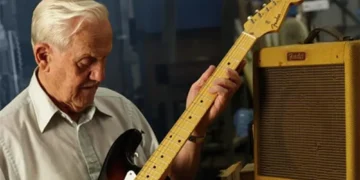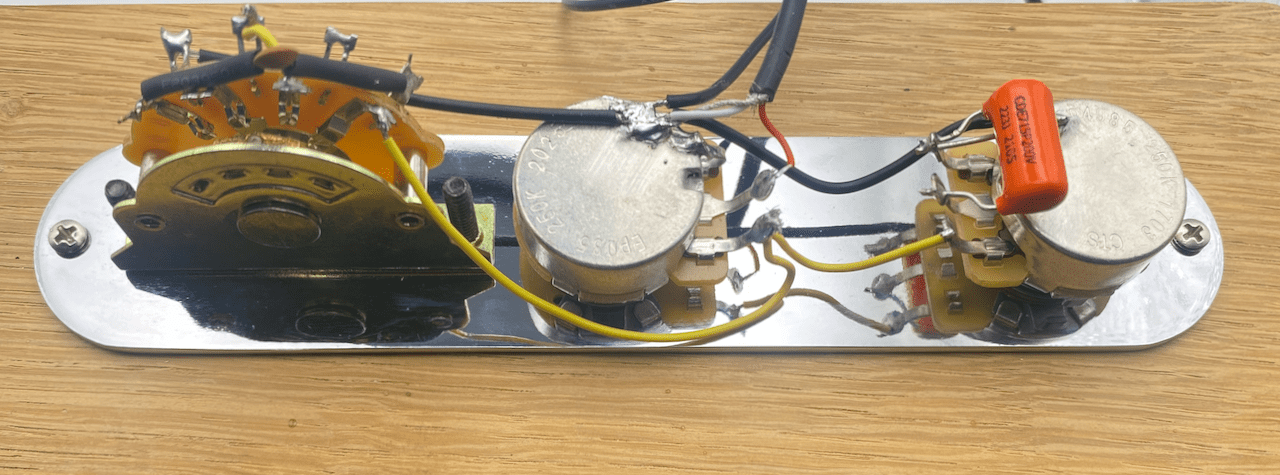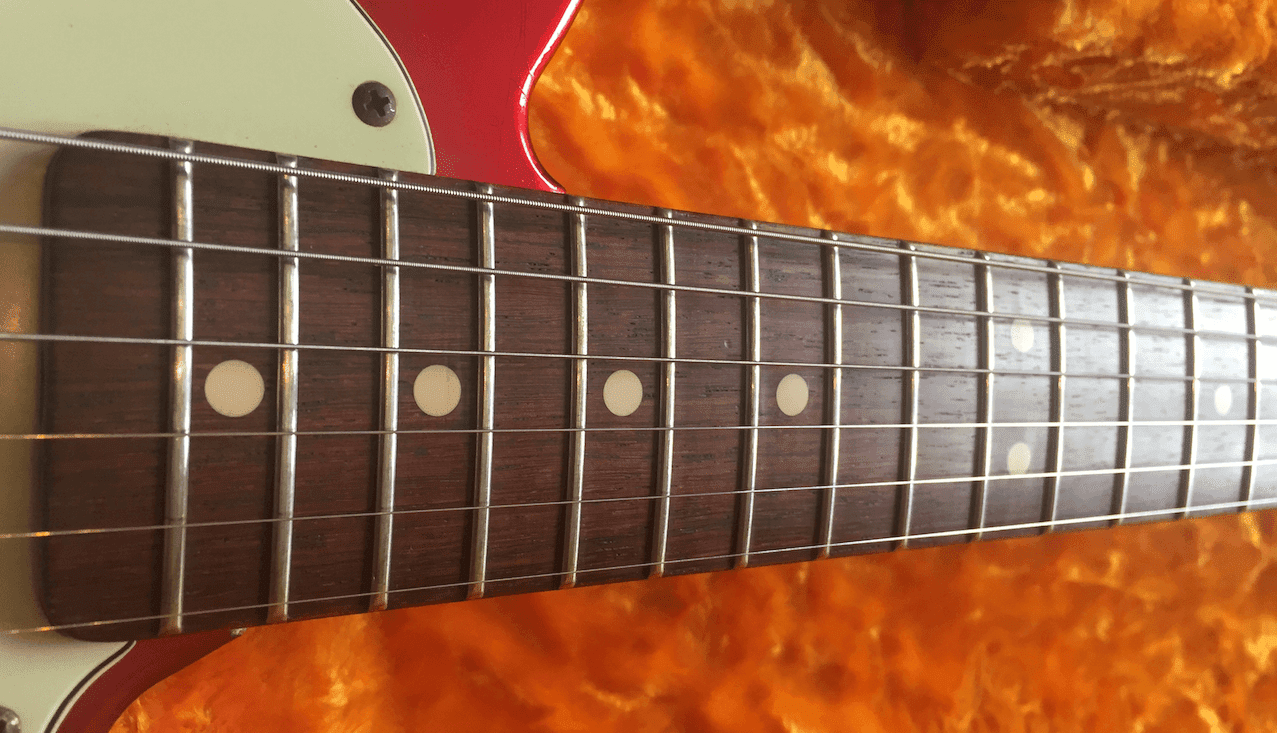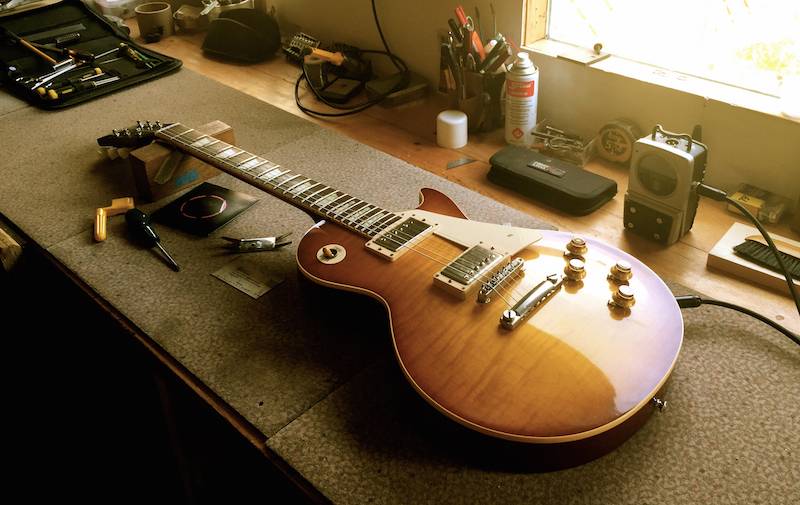What is the Fender TBX Control?
The Fender TBX control is one of the oldest factory modifications from Fender. The actual history of exactly where this modification came from seems lost to history, as even Fender themselves aren’t 100% sure of its origin. The Fender TBX control was first introduced in 1988 with the Eric Clapton Signature Strat and is still fitted to the Artist Series and Fender Custom Shop models to this day. The Fender TBX control was also found in the Buddy Guy Signature Strat.
TBX stands for “Treble Bass Expander”. As a passive control, it replaces one of the standard tone pots in a Stratocaster without the need for a battery. The control uses a stacked and detented 250K/1Meg pot that adds to the standard tonal flexibility of your circuit. Rotating from 0 to 5 acts like the stock tone control.
Continuing from 5 up to 10, the control decreases resistance, therefore allowing more bass, treble and presence through the circuit to the amp. The Fender TBX control does this by using the custom-designed stacked pot along with an 82K ohm resistor and a 0.022uF capacitor to cut the bass and treble out of the circuit, depending on which way you rotate the control knob.
Some people wrongly think of the Fender TBX control as a treble boost, but depending on its rotation, it is almost acting more as a mid boost by dialling down the bass or treble frequencies.
In fact, the Fender TBX control cuts either bass or treble depending on its rotation, whereas a standard tone control only cuts treble. The stacked, dual-gang pot is wired to work as a high-pass filter in one direction (from the middle ‘5’ position) and a low-pass filter in the other direction. The middle position of the detent acts as an off, or flat filter response position.
How does the Fender TBX control work?
The custom-designed stacked pot is where all the magic happens. So let’s look at each part separately;
The lower pot (marked as B in the photo) is a standard 250K audio taper pot. Well, sort of…. The rotational range of the pot is different that a standard 250K pot. The range only goes from 0 to 5. When you reach the detent, the 250K pot is lifted out of the circuit, becoming a ‘no-load’ tone pot.
Within a standard pot, there is a resistive material printed in a ring onto a phenolic wafer. At each end of this material are the two outer lugs of the pot. Inside the Fender TBX control, only half of this ring is conductive, leaving the other half as a non-conductive material. So for the full rotation of the tone knob, the 250K pot is only in the circuit for the first 50% of the rotation.
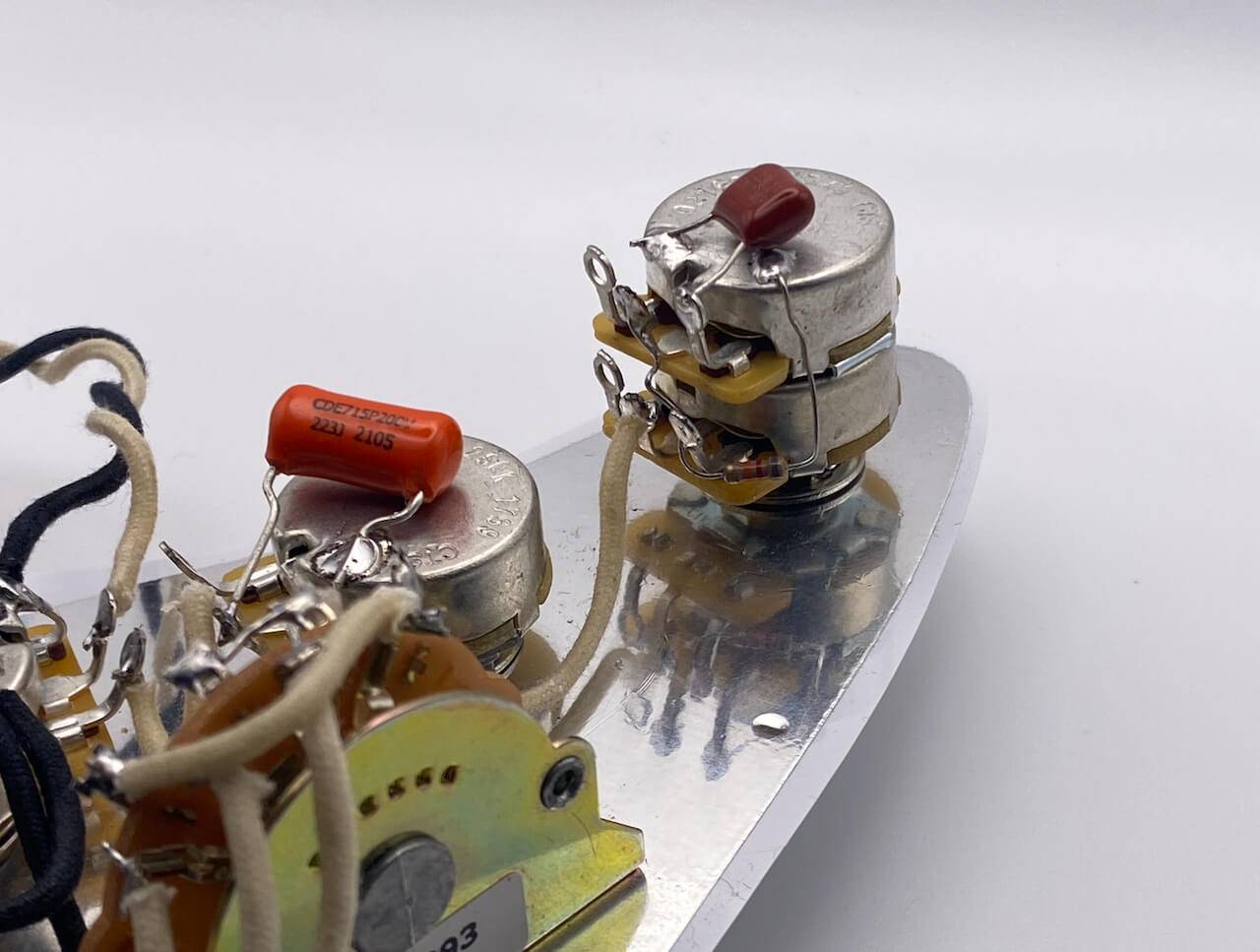
The upper pot (marked as A in the photo) acts in the opposite direction to the lower. It has the same split resistive material ring, but instead of having a non-conductive material for the other 50%, it uses a metal strip for the remaining 50%. The effect of this is that from 0 to 5 the resistance of pot A is at maximum.
Once you pass the detent position the normal resistive material is connected to the circuit and the standard pot function takes place. The main difference here is that the use of a 1Meg linear pot is wired in series with the 82K ohm resistor. The resultant load added to the guitar’s circuit is very low.
As with many tone mods, the capacitor and resistor values can be altered to achieve different tonal results.
The FenderTBX control is available from Fenders online store (part no. 0992052000). Since it’s inception the components have changed a few times. Fender has used several different resistor and capacitor values over the years. The first few stacked pots also did not have a centre detent feature.
The diagram below shows how the Fender TBX circuit is wired into a guitar.
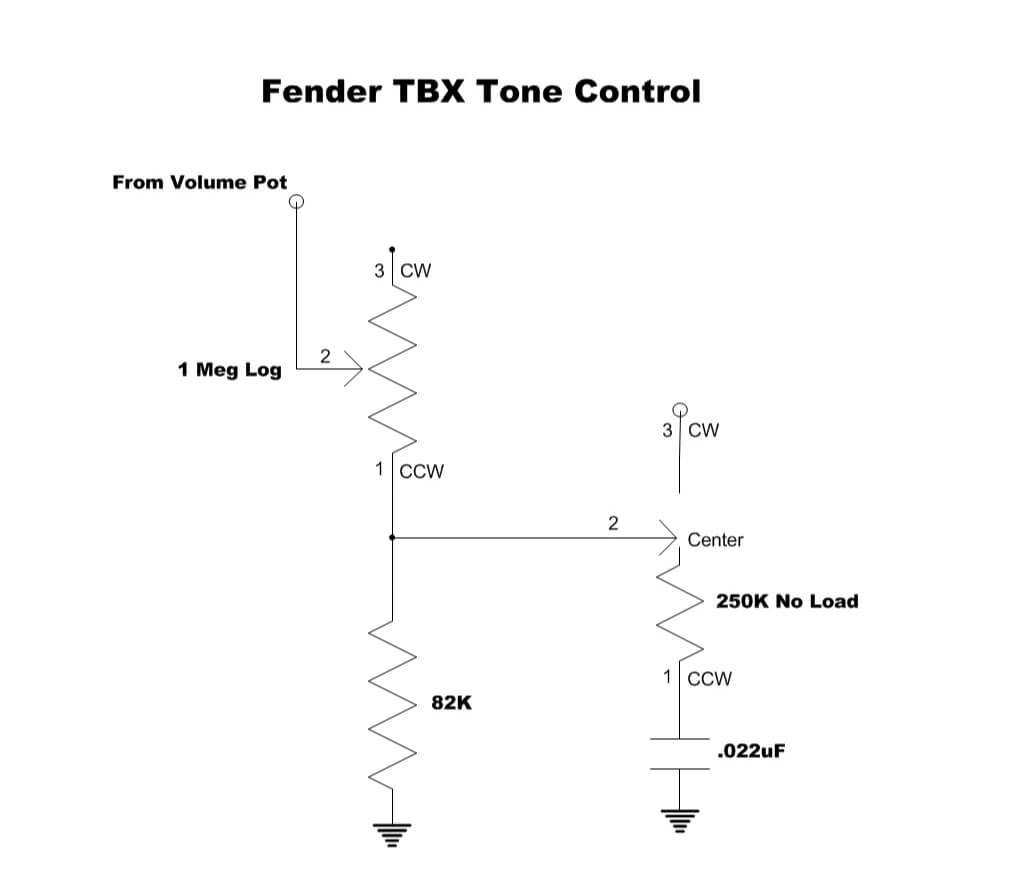
Modifications
While the custom-designed, stacked 250K/1Meg pot is the central focus of the Fender TBX control, there really is nothing to modify inside. But the additional capacitor and resistor in the circuit give a lot of modification possibilities.
Tone Capacitor values
The tone cap on pot B, for example, is a great place to start. Here, you could experiment with anything from a 2200pF up to a 0.1uF cap to change the frequency filtering on the pot. If you are modding your guitar with a Fender TBX control and have previously tried different tone cap options, you can use the same cap here. Different single coils will react slightly differently to different cap values, so the possibilities are endless. There’s no reason why you can’t also experiment with materials either. You can try silver mica, metal film, or paper-in oil.
Resistor values
Moving to pot A, the series resistor is a prime candidate for experimentation also. The value of this resistor affects the amount of bass cut out of the circuit. Remember, this side is a low-pass filter. While Fender has specified an 82K ohm resistor for their kit, there is no reason why you can’t tweak this value.
Depending on which pickups are in your guitar, you could try a resistor of 180 – 220 K ohm. This would give you a smoother and more natural bass cut. But you could try anything from 20 to 500K ohm, it all depends on the pickups and the sound you are looking for in your head. As with the capacitors, you could experiment with different resistor materials as well.
Rewiring
Smoother passive use
The Fender TBX control was originally designed to work with an active pre-amp circuit, such as the Mid Boost circuit found in the Clapton Strat (more on that later…). When the Fender TBX components were chosen, their operation was considered alone with these active circuits. As an example, the 82K ohm resistor. This resistor acts like a shunt in the circuit. Always in the circuit, irrespective of the position of the pot.
After the success of the Fender TBX control in the Clapton Strat, Fender started fitting it to other passive guitars. The problem is, the high impedance of a passive guitar circuit doesn’t really need or like an additional 82K ohm shunt.
A very good modification to the standard Fender TBX circuit is to replace the 82K ohm resistor with a jumper wire. Then add a 220K ohm resistor as shown. This new resistor will make the mid-point transition between the two pots much more seamless than before. There should be no sudden change in tone or volume as the TBX control moves from one pot to the other.
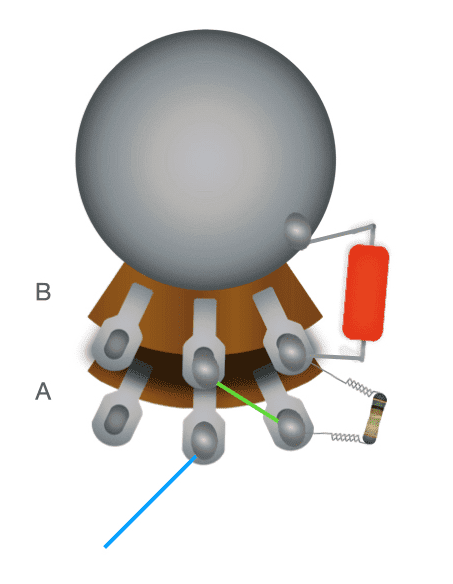
More bass cut
Another option for modification is to remove the stock resistor completely and replace it with a second capacitor. This second capacitor acts as a bas-cut filter. By altering the value you can dial in your own bass-cut frequency.
The higher the value, the lower the frequency and the greater the effect. As a guide, aim for the bass-cut cap to be 10% of the treble-cut cap. A standard 0.022uF cap for the treble-cut can be paired with a 2200pF cap for the bass-cut. But as with all these mods, you can experiments to find your own preferred sound.
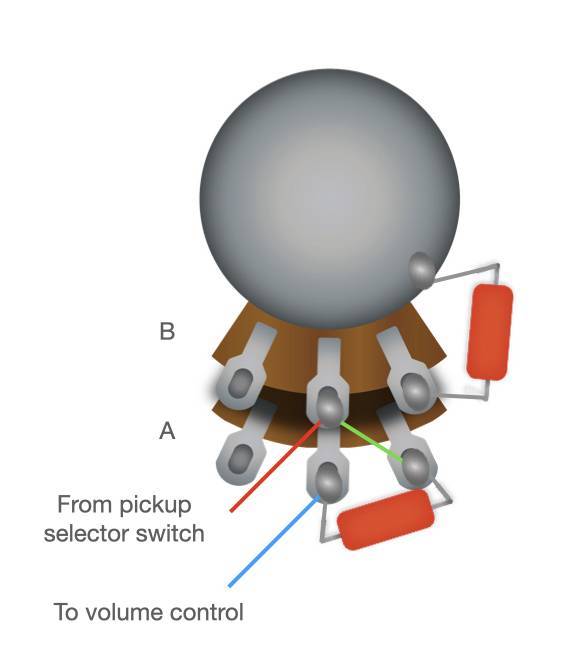
A little more Clapton…
Not only do all Eric Clapton Signature Strats come with the Fender TBX control. They also have a little more power under the pickguard. The guitars also come fitted with an active mid-boost circuit on the lower tone control. The circuit board adds a controllable 25dB of pre-amp boost alongside the Fender TBX control.
The active mid-boost circuit was originally called the “MDX mid-boost circuit”, and was fitted to the Fender Elite Stratocaster from around 1983. Developers John Carruthers and John Demeter designed the circuit to make single-coil guitars sound more like humbuckers.
The Elite Stratocaster became the foundation of the Eric Clapton Strat. Clapton apparently likes the MDX circuit but asked Fender if it could have a little more compression. Fender swapped out the pickups for a set of Lace Sensors and tweaked the circuit to deliver 25dB at around 500Hz. Clapton liked the mod so much that it is still fitted, unchanged from the original design, to this day.
The entire kit, including the Fender TBX control, can be purchased from Fender (part no. 005757000).

Clapton in a box
While these two modifications, either separately or together make for a great addition to any single-coil equipped guitar, what if you don’t want to use them all the time? Or if you jump between multiple guitars? Are you expected to fit these kits into every guitar? I’m guessing Fender would probably be fairly happy if you did! But there is an alternative.
Cara Guitars have licensed the Fender TBX control and the active mid-boost from Fender and created a pedal version. Their ‘Clap Tone’ pedal delivers everything you would want from a guitar wired with these mods, just in a pedal!
As they say themselves “Now get the Clap anytime”.


